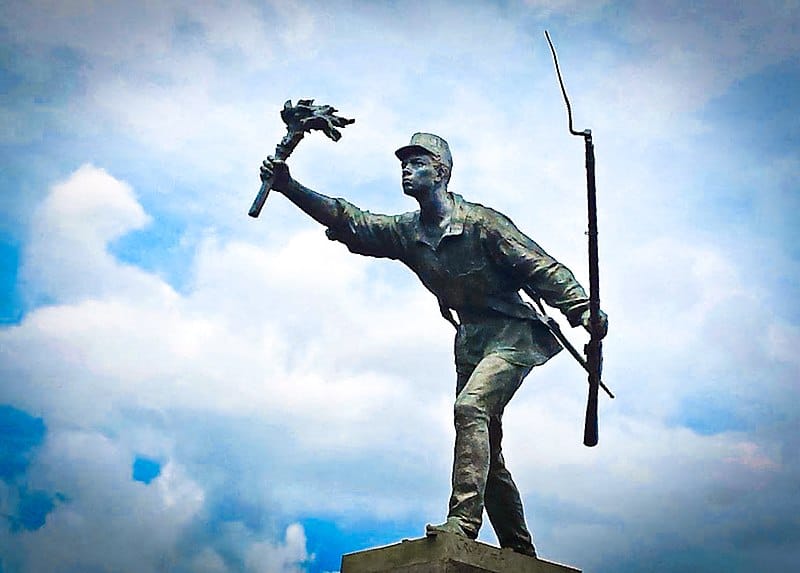In March and April 1856, Costa Rica fought its only international war to preserve its sovereignty and keep the Central American republics from becoming slave states for the United States.
It was in that war that Juan Santamaría, a humble soldier from Alajuela, northwest of San José, turned the tide by torching the thatch roof of enemy headquarters in Rivas, Nicaragua. The date was April 15, and marks the day of that important event.
The initial point of conflict in that war was the San Juan River, the only transit route between the Atlantic and Pacific oceans, critical for moving people and products.
Control of the river meant control of the region, and William Walker, a medical doctor and journalist from the U.S. state of Tennessee, saw it as prime territory for the expansion of slave states for the U.S. South.
His goal was not only Central America but also Cuba. With his army of filibusters he set off for Nicaragua, where a long civil war had left the country vulnerable. Soon Walker became President of Nicaragua, and in March 1856, his army invaded Costa Rica.
Dr. Robert May, a U.S. historian from Purdue University, in his book, “The Filibusters,” records the feelings toward Walker and his invading army at the time.
May became interested in Walker and filibustering after researching the expansion of slavery in the United States. He defines filibustering as “private or nongovernmental military attacks.”
Although the U.S. American Party and Republican Party of that time opposed filibustering, there was popular interest in filibustering expeditions to spread slavery.
The Democratic Party of the time favored territorial expansion under the idea of “manifest destiny, which suggested that God wanted the U.S. to expand its influence,” May said in an interview. However, the expansion of slavery was a southern concern, while northerners opposed slavery everywhere.
Filibusters, or private militias, involved all sorts of people, from professionals to urban riffraff, immigrants and men who had gone broke in the Gold Rush.
Some believed in conquest and colonies and others wanted adventure. Some wanted to earn better money than they could in a competitive labor market, while others wanted to escape personal problems.
This was not the first private military adventure stemming from the United States, May reports. In the 1830s, thousands of U.S. filibusters moved into Canada, then still a British colony, and there were earlier expeditions into French and Spanish colonies.
Walker had made previous incursions into Mexico, where he set up the short-lived republic of Sonora in 1853. The Mexicans, resentful of giving up more territory to the United States, reclaimed it in 1854.
Surprisingly, Walker, whose thinking reflected that of the U.S. South, recruited in New York and San Francisco and had a lot of support from northern U.S. newspapers and magazines, politicians and steamship companies. Harper’s Weekly and Frank Leslie’s Illustrated Newspaper ran continuing articles and engravings on the war.
Walker was defeated in his first try at controlling Central America and the river route when Central Americans rallied to their defense. Though plagued with desertions by his own men, he made several more attempts.
In August 1860, he landed in the port of Trujillos, Honduras, but was forced to withdraw to the island of Roatán. At that time Britannia ruled the waves and parts of the land, including Roatán, and English ships were stationed in ports along the Caribbean and the San Juan.
By now Walker’s third attempt had failed, and Walker surrendered to the British, who turned him over to the Honduran government. He was executed by firing squad Sept. 12, 1860, in Honduras.






